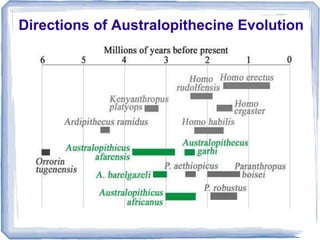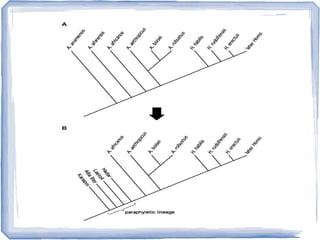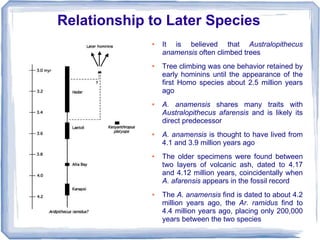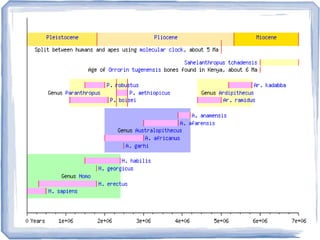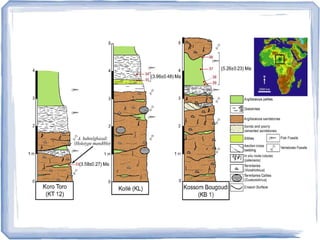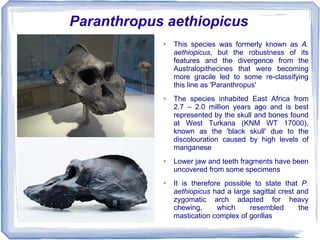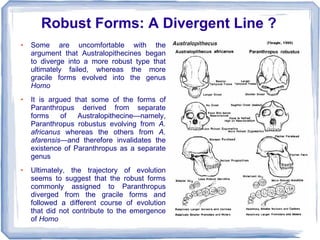The document summarizes key australopithecine species and their evolution. It discusses Australopithecus anamensis, A. afarensis, A. africanus, Paranthropus aethiopicus, P. boisei, P. robustus, and A. garhi. It describes their fossil records, anatomies, habitats, locomotion, and relationships. A. garhi is significant as the earliest known tool-making hominin. Debate continues regarding the lineages and relationships between the gracile and robust australopithecine forms.


